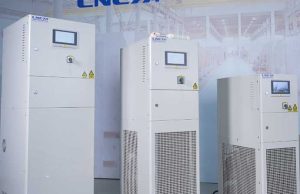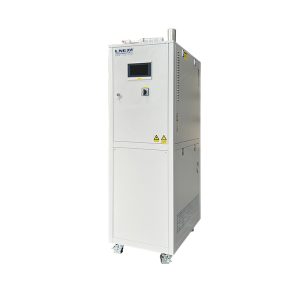Which process in semiconductor manufacturing requires a multi-channel chiller? Why is it necessary?
In the semiconductor manufacturing process, multi-channel chillers are mainly used in key process links that require high-precision temperature control and large-scale heat management.
Here are some typical usage scenarios and reasons:
Chemical Vapor Deposition (CVD): In the CVD process, a multi-channel chiller is used to cool the reaction chamber walls, heat exchangers, and gas preheating exchangers to maintain stable reaction chamber temperature, ensuring precise control of film thickness, uniformity, and chemical reactions.
Etching and etching: Both dry etching and wet etching require precise temperature control. The multi-channel chiller ensures the temperature of the etching equipment and chemical bath, which affects the etching rate, selection ratio, and graphic accuracy.
Ion implantation: The ion source and target chamber need to be cooled by a chiller to control temperature, prevent overheating from affecting ion energy dispersion, and ensure the accuracy of injection depth and dosage.
Heat treatment: such as oxidation, diffusion, annealing, nitriding, multi-channel chiller controls furnace temperature to ensure uniform temperature, affecting diffusion rate, activation, and impurity distribution.
Testing equipment: such as probe testing and aging testing benches, multi-channel chillers control the testing environment temperature to ensure equipment stability and reproducibility of test results, especially for high or low temperature testing.
Why do need a multi-channel chiller?
Temperature control accuracy: Multi channel design can more accurately control the temperature of each area, reduce temperature fluctuations, and ensure process consistency.
High heat load management: Semiconductor manufacturing generates a large amount of heat energy, and multi-channel can effectively handle a large amount of heat load to ensure equipment operation safety and efficiency.
Flexibility: Multiple channels can be independently adjusted to meet specific temperature requirements of different processes or equipment sections, increasing process flexibility.
Reliability: Redundant hot backup, single channel failure does not affect overall operation, improves system stability, and reduces downtime.
In summary, the application of multi-channel chillers in semiconductor manufacturing is based on high requirements for temperature control accuracy, thermal energy management, production efficiency, and process stability, ensuring the performance and yield of semiconductor devices.
Recommandations connexes
-
Pourquoi les tests de puces ont besoin de refroidisseurs de semi-conducteurs
413Struggling with chip test failures? See how semiconductor chillers keep wafers stable, cut downtime, and protect your production.
Voir les détails -
Exigences de température pour les refroidisseurs d'implantation ionique dans les processus de fabrication de semi-conducteurs
861L'implantation ionique est une étape importante dans les processus de fabrication des semi-conducteurs. Elle permet de doper avec précision et de contrôler les propriétés électriques des matériaux semi-conducteurs en y implantant des ions à haute énergie. Ce processus génère beaucoup de chaleur...
Voir les détails -
Série FLTZ multicanaux
2621La méthode de chauffage à 40 ℃ adopte un compresseur de chauffage à gaz chaud entièrement fermé, et la machine fonctionne en continu pendant 24 heures Principalement utilisée pour le contrôle précis de la température dans les produits semi-conducteurs.
Voir les détails -
Comment fonctionnent les refroidisseurs CVD et PVD pour semi-conducteurs ?
1071Le principe de fonctionnement des refroidisseurs utilisés dans les processus de dépôt chimique en phase vapeur (CVD) et de dépôt physique en phase vapeur (PVD) des semi-conducteurs consiste principalement à éliminer la chaleur générée pendant le processus en faisant circuler de l'eau de refroidissement ou des...
Voir les détails
 LNEYA Industrial Chillers Fabricant Fournisseur
LNEYA Industrial Chillers Fabricant Fournisseur












